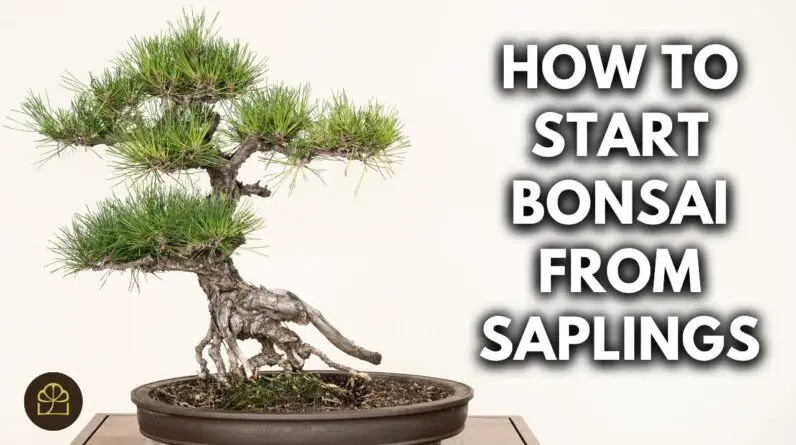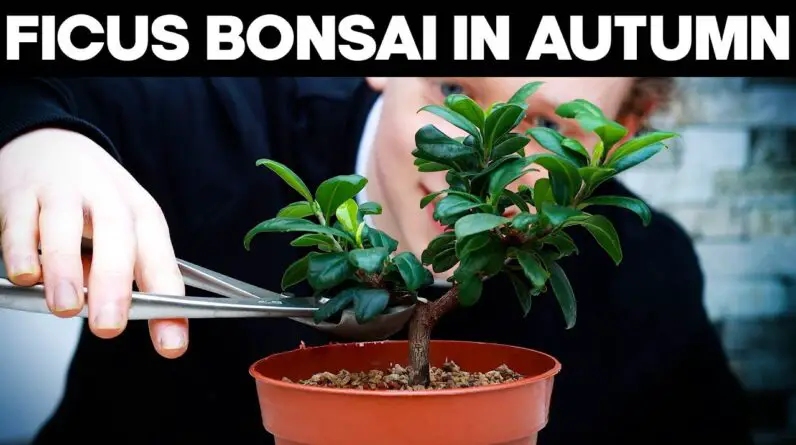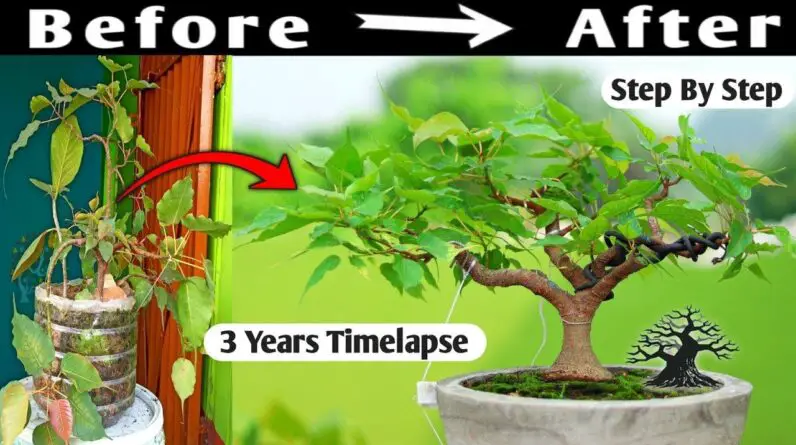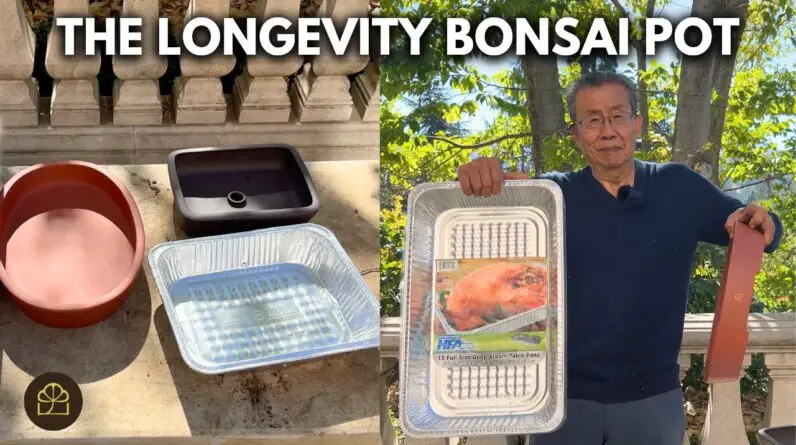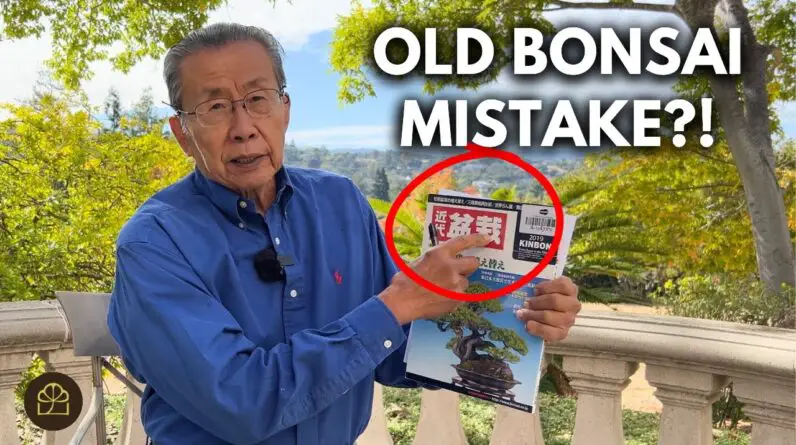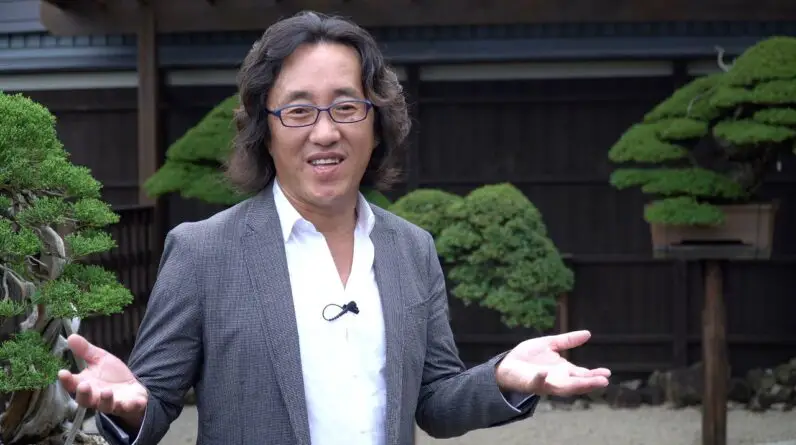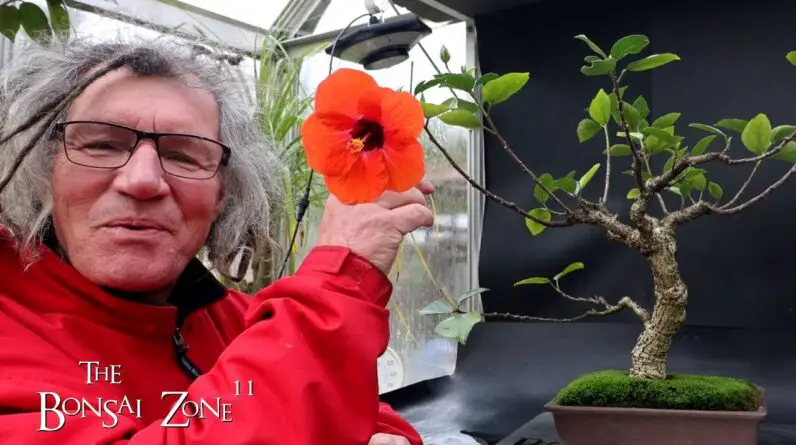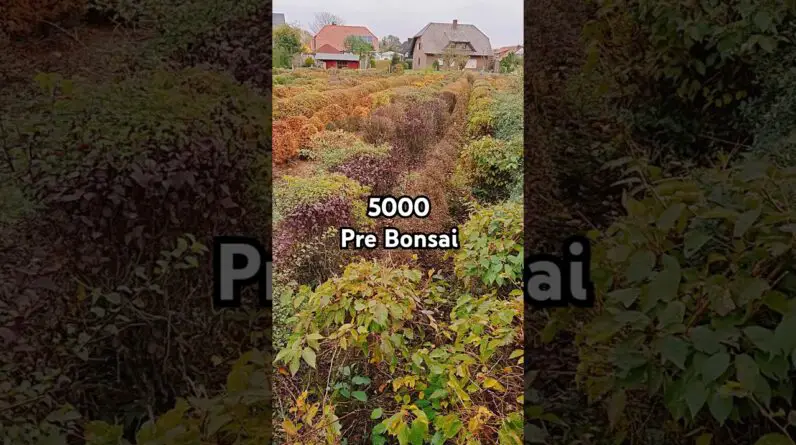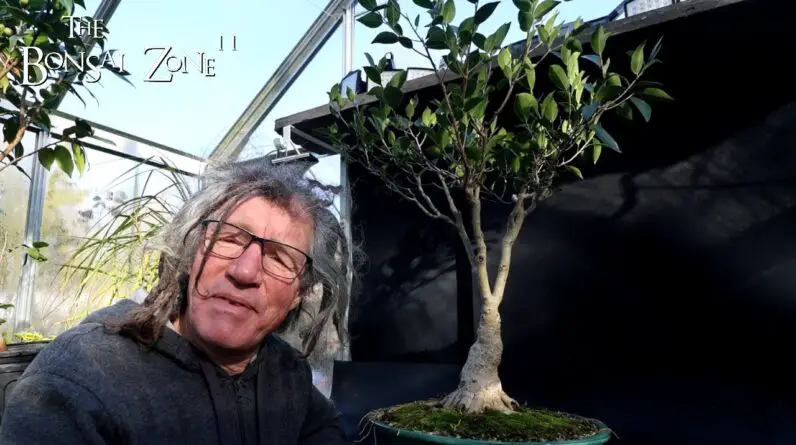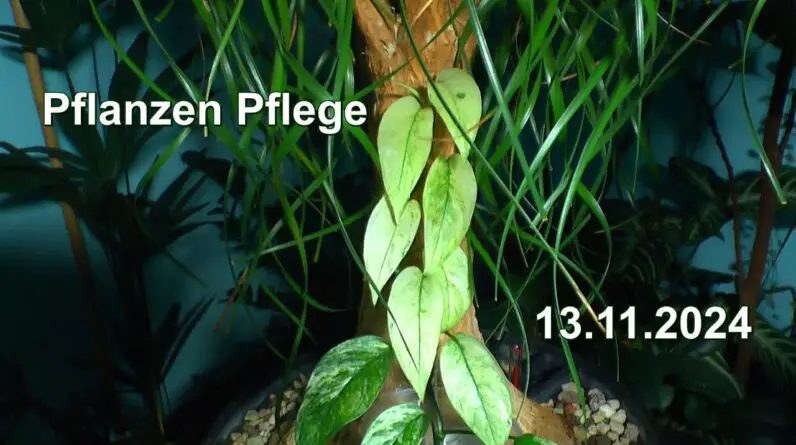Wish to find out how to make an Apple bonsai tree? In this video clip by Bonsai Empire, they reveal you exactly how to prune and wire an Apple tree that is around 15 years old. The video clip was recorded throughout autumn, when the tree was loaded with small apple trees.
Bonsai Empire is passionate about sharing the living art of Bonsai and developed this do it yourself tutorial to help and motivate novices. This video clip is part of their on-line programs, yet they provide many other totally free videos too.
So if you want finding out more regarding Bonsai techniques, head over to Bonsai Empire’s website!
In the video, they explain the procedure of trimming and wiring this Apple bonsai tree. They use tiny pruning shears, pliers, and cord cutters. The leading branch is the first to be cut, and after that they focus on 2 thicker branches to accomplish the wanted silhouette.
They show the value of a 360-degree approach when cutting and wiring to avoid any dead angles. After the trimming and wiring, the tree looks a lot more polished and balanced. With regular upkeep, this tree will certainly remain to grow and expand new branches in the upcoming springtime. If you intend to learn more regarding pruning, electrical wiring, and repotting methods, think about signing up with Bonsai Empire’s on-line courses and get to specialist guidance and the chance to ask the instructors questions directly.
Apple Bonsai Tree: An Intro
Welcome to the globe of apple bonsai trees! Producing and growing a small apple tree can be a satisfying and satisfying pastime. Not only do these bonsai trees offer a gorgeous visual, however they additionally offer the opportunity to grow your own fruits in a tiny and convenient space.
In this extensive short article, we will certainly assist you with the procedure of picking the appropriate apple tree range, collecting the necessary materials, expanding the tree from seeds, pruning and wiring strategies, appropriate maintenance, potting considerations, and the distinctions between outside and interior apple bonsai trees.
Think about the Size of the Bonsai
When choosing an apple tree selection for bonsai growing, it is essential to consider the ultimate dimension of the tree. Because bonsai trees are implied to be miniature versions of their bigger equivalents, picking a range that normally remains little is crucial. Look for apple tree ranges that are understood for their compact development and smaller stature, such as columnar apple trees or normally dwarf selections. This will certainly make sure that your bonsai stays in proportion and is much easier to manage.
Choose a Crab Apple Tree Variety
Crab apple trees, with their small and dynamic fruits, are typically the preferred choice for apple bonsai farming. These trees naturally have a lot more delicate and proportional features, making them fit for bonsai appearance. Additionally, crab apple trees are sturdy and versatile, making them much easier to care for and preserve as bonsai samplings. Consider selections such as Malus sylvestris or Malus floribunda, which are typically made use of in bonsai farming.
Think about the Climate and Place
Before choosing the apple tree selection for your bonsai, it is very important to take into consideration the environment and area where you intend to grow it. Various apple tree varieties flourish in different environments, so choose a selection that is appropriate to your certain region. Furthermore, remember the quantity of sunshine and temperature level demands of the chosen selection. Many apple trees require full sunlight to grow, so make certain that your picked place offers enough sunlight throughout the day.
Select an Appropriate Bonsai Pot
Picking the right bonsai pot is critical for the wellness and visual appeals of your apple bonsai tree. Seek a pot that is proportionate to the size of your tree and enhances its overall design. Bonsai pots can be found in different products such as ceramic, plastic, or clay. Each material has its very own benefits and factors to consider, so choose one that suits your personal preferences and the details demands of your apple bonsai tree.
Obtain Top Quality Bonsai Soil
Top notch bonsai soil is crucial for the healthy growth of your apple bonsai tree. The dirt needs to give sufficient water drainage while preserving adequate moisture for the tree’s roots. You can purchase pre-made bonsai soil blends that are specifically made for bonsai cultivation, or you can produce your own mix by integrating parts such as Akadama, pumice, and lava rock. Testing with different soil mixes may be essential to locate the perfect balance for your apple bonsai tree.
Obtain Trimming and Wiring Devices
Pruning and circuitry are important methods for forming and preserving the form of your apple bonsai tree. To effectively prune and wire your bonsai, you will require a collection of correct tools. Some crucial devices include a scooped branch cutter for specific pruning, bonsai wire cutters for managing the wire, and pliers or tweezers for complex work. Purchase high-grade devices to guarantee accuracy and reduce damages to your apple bonsai tree.
Gathering Apple Seeds
One of the most satisfying ways to start an apple bonsai tree is by growing it from seeds. You can collect apple seeds from ripe fruits or purchase them from trusted providers. Ensure that the seeds are fresh and viable for the very best opportunities of germination.
Prep work of Seeds for Planting
Prior to planting the apple seeds, it’s important to prepare them for optimum germination. Start by soaking the seeds in water for 1 day to soften the external seed coat. After soaking, remove the seeds from the water and enable them to completely dry for a couple of days. This process helps damage the seed’s dormancy and enhances the opportunities of successful germination.
Growing and Germination Process
Once the seeds are prepared, plant them in tiny pots full of well-draining bonsai dirt. Area the pots in a cozy and warm place, and maintain the dirt regularly moist. Germination typically takes about two to four weeks, depending upon the selection and environmental problems. As soon as the plants have actually sprouted, choose the healthiest ones to continue expanding as your future apple bonsai trees.
Understanding Trimming Strategies
Pruning is an essential element of bonsai growing that helps preserve the tree’s dimension, form, and total looks. By precisely getting rid of branches and foliage, you can attain the wanted kind and equilibrium. Learn more about different pruning techniques such as maintenance pruning, branch pruning, and squeezing to maintain the health and shape of your apple bonsai tree.
Identifying the Right Branches to Trim
When trimming your apple bonsai tree, it is essential to determine the branches that require to be pruned. Try to find branches that disrupt the wanted kind or prevent the tree’s overall equilibrium. Get rid of any type of dead, harmed, or unwanted branches to advertise healthy development and stop illness. Get in touch with bonsai resources or seek support from seasoned bonsai fanatics if you’re unsure which branches to prune.
Trimming to Achieve Desired Shape
Trimming is not just concerning upkeep but also regarding shaping your apple bonsai tree. Use trimming strategies to direct the tree’s growth and attain the preferred shape and design. Take into consideration traditional bonsai shapes such as formal upright, slanting, or waterfall, and adapt them to fit the features of your apple bonsai tree.
Preparing the Tree for Circuitry
Wiring is one more essential strategy in bonsai farming that aids create and maintain the desired form and structure of your apple bonsai tree. Before applying cords, make certain that the branches and trunk are versatile enough to be controlled without causing damage. Younger branches are more flexible and simpler to wire, while older branches might need steady bending with time.
Picking the Right Wire Dimension
Choosing the appropriate cable dimension is crucial to stay clear of harming the branches of your apple bonsai tree. The cord should be strong sufficient to hold the desired shape without cutting into the bark. Pick a cable size that is around one-third of the thickness of the branch being wired. Copper or light weight aluminum cord is typically utilized, but see to it it is soft enough to be quickly shaped.
Applying Circuitry Strategies
To wire your apple bonsai tree, begin by wrapping the cable at the base of the branch or trunk and afterwards carefully spiral it upwards, ensuring to keep a 45-degree angle between the wire and the branch. Beware not to wrap the cord too firmly, as it can restrict the tree’s blood circulation and cause damages. As soon as the desired form is achieved, protect the wire by turning the ends with each other or using cord clips. Eliminate the cord after a few months to stop it from cutting into the bark.
Watering and Moisture Control
Proper watering is crucial for the health and vitality of your apple bonsai tree. The frequency and amount of water needed rely on various elements such as the environment, pot size, and tree’s development stage. Water your apple bonsai tree when the leading inch of soil feels completely dry, making certain that the water reaches the entire origin system. Stay clear of overwatering, as it can lead to root rot and various other fungal diseases.
Feeding and Nutrient Needs
Maintaining soil fertility is vital for the healthy growth of your apple bonsai tree. Apply a balanced plant food throughout the expanding season to give the required nutrients for ideal development. Usage organic or slow-release fertilizers particularly created for bonsai trees, complying with the recommended dosage guidelines. Routinely monitor the tree’s reaction to fertilization and adjust the feeding program as necessary.
Bug and Condition Management
Like any other plant, apple bonsai trees can be prone to various insects and illness. On a regular basis evaluate your tree for signs of invasion, such as tarnished fallen leaves, pests, or irregular growth. If any kind of issues are detected, immediately take suitable steps to manage and eliminate the trouble. Think about utilizing natural bug control methods or consult with experts if essential.
Repotting Regularity and Timing
Repotting is a crucial job in bonsai growing that allows for origin system wellness and overall development control. The frequency and timing of repotting depend upon numerous variables such as the age and growth rate of the apple bonsai tree. As a basic standard, repotting is commonly done every 2 to 3 years, ideally during the very early springtime prior to the tree starts proactively growing.
Picking an Appropriate Bonsai Pot
When repotting your apple bonsai tree, choose a brand-new pot that is a little larger than the present one. Consider the aesthetics and total equilibrium of the tree when selecting the pot’s form and style. Make certain that the pot gives appropriate water drainage holes and is made from a material that is suitable for bonsai farming.
Hair Transplanting and Origin Pruning
Throughout repotting, meticulously eliminate the tree from its current pot and carefully loosen up the origin round. Evaluate the roots and trim any kind of broken or excessively long origins. This process, known as origin trimming, aids promote new origin development and keeps the tree’s origin system portable. After root trimming, position the tree in the new pot, making certain that the origins are equally dispersed and covered with fresh bonsai soil.
Appropriate Potting Strategies
When potting your apple bonsai tree, usage proper techniques to ensure its stability and healthy development. Setting the tree somewhat off-center in the pot to develop a feeling of motion and balance. Secure the tree in position using bonsai wires or rocks, and fill the remaining room in the pot with bonsai soil, making certain that no air pockets are left. Water the newly potted tree completely and check its healing throughout the complying with weeks.
Advantages and Considerations for Outdoor Bonsai
Expanding an outdoor apple bonsai tree permits it to experience the all-natural transforming seasons, which can enhance its overall beauty. Outdoor bonsai trees generally have more space to grow and develop a stronger root system. However, outdoor bonsai trees require careful consideration of climate and weather conditions, protection from extreme temperature fluctuations, and regular exposure to sunlight.
Benefits and Challenges of Indoor Bonsai
Growing an apple bonsai tree indoors provides more controlled conditions and allows enthusiasts in colder climates to enjoy bonsai cultivation year-round. Indoor bonsai trees require careful attention to temperature, humidity, and lighting conditions. Supplemental lighting may be necessary, especially during the winter months when sunlight exposure is limited. Additionally, indoor bonsai trees may require more vigilant pest and disease management due to the controlled environment.
Creating and caring for an apple bonsai tree is a rewarding and fulfilling endeavor. With proper knowledge and techniques, you can enjoy the beauty of nature in a miniature form and even grow your own miniature apples.
By choosing the right variety, gathering the necessary materials, mastering pruning and wiring techniques, maintaining proper care, and selecting the right pot and location, you can cultivate a stunning apple bonsai tree that brings joy and tranquility to your surroundings.
Happy bonsai cultivation!
[sspostsincat category=”Can You Turn An Apple Tree Into A Bonsai Tree?”]


